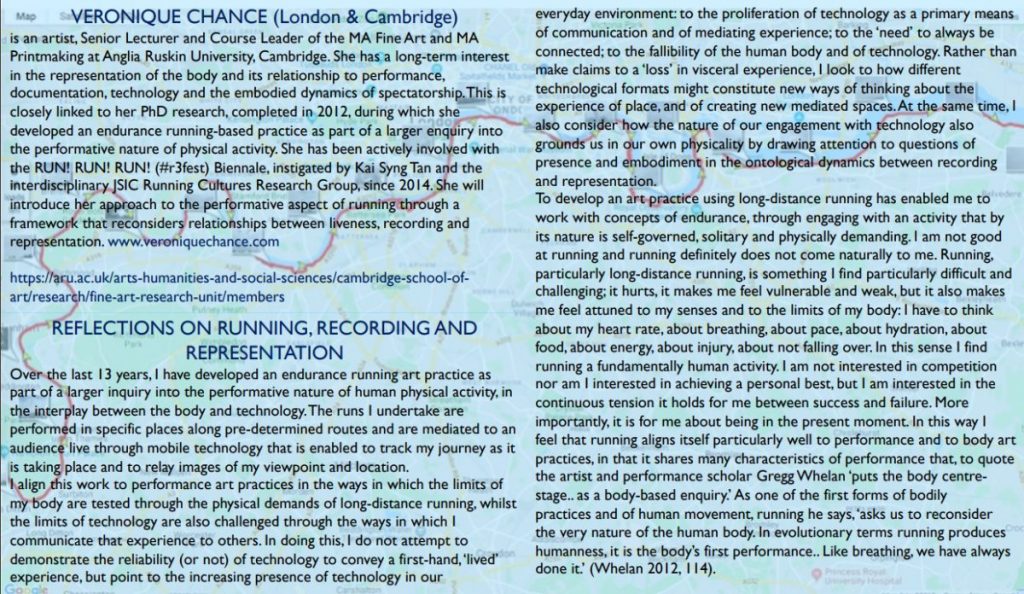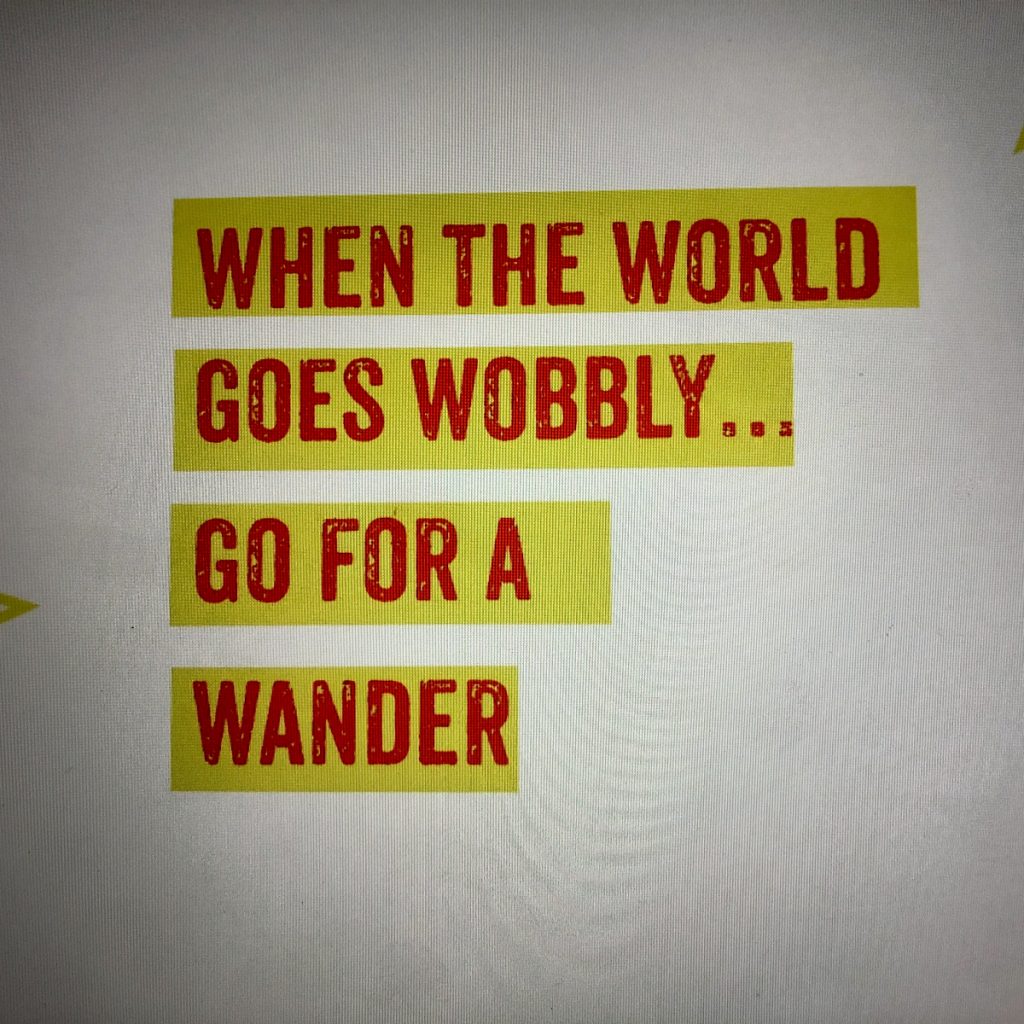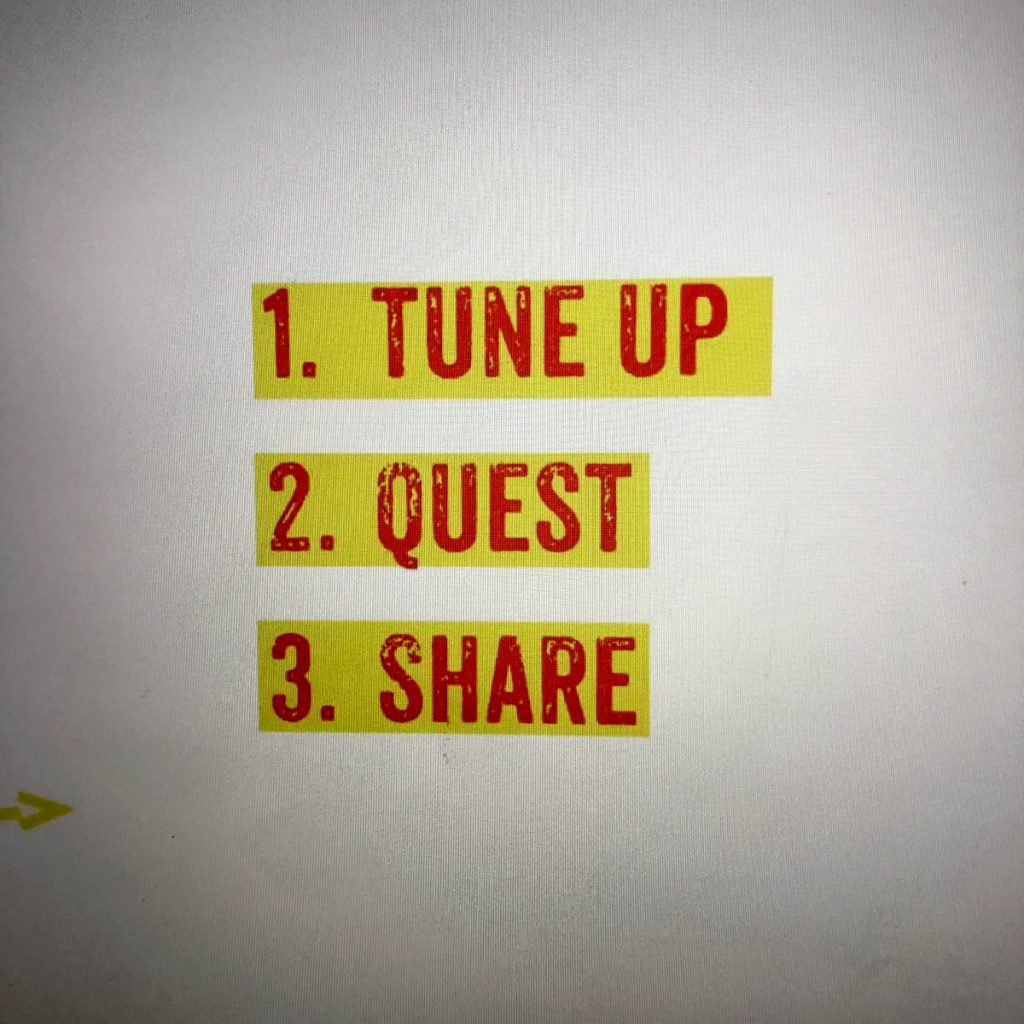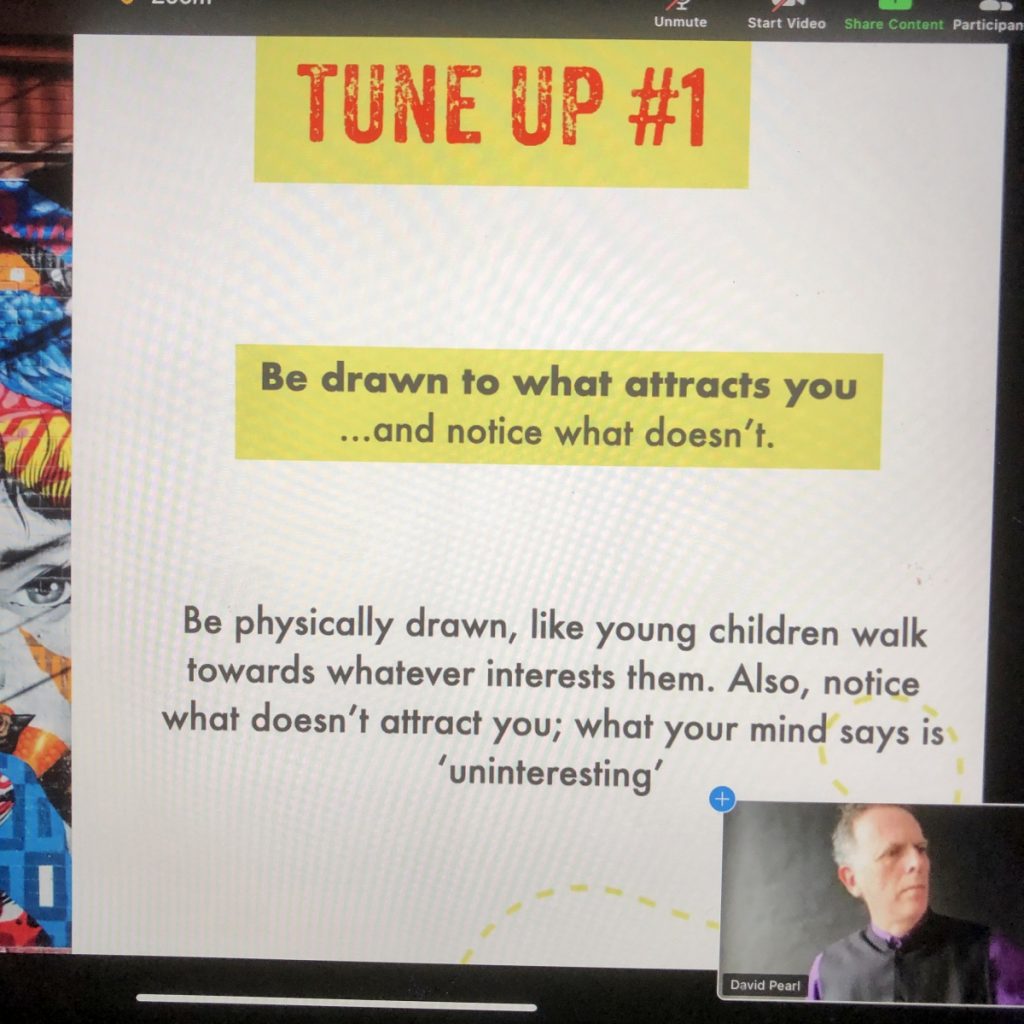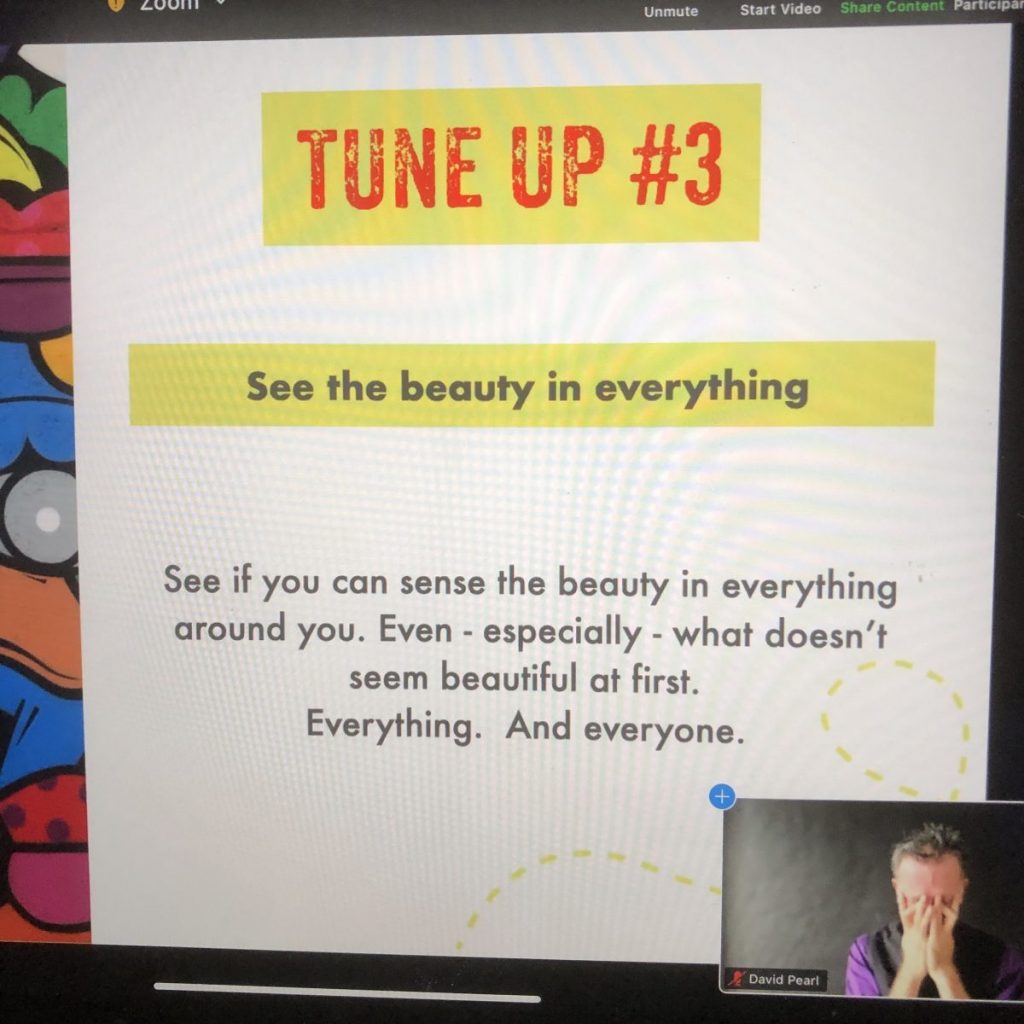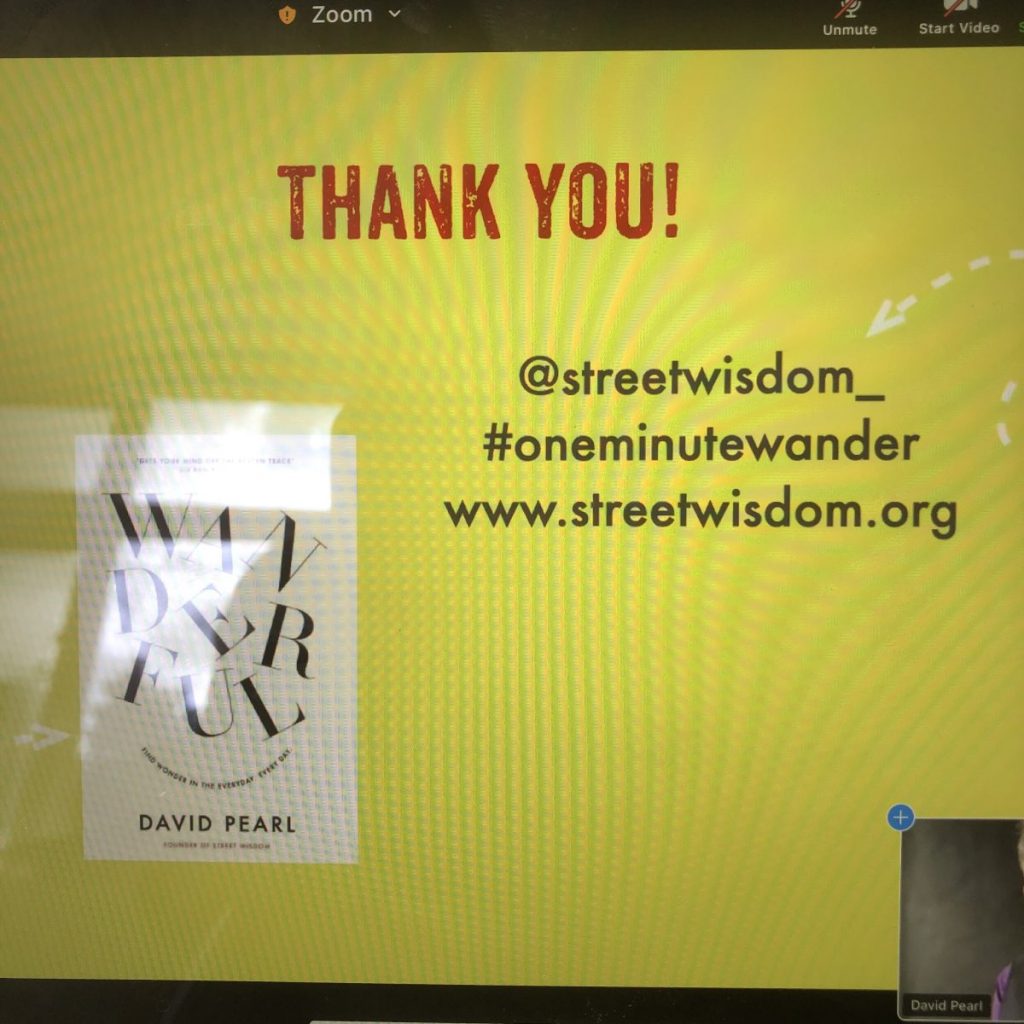I attended a couple of online events related to how walking and running can inform art practice. Due to my plan to walk the route of the River Erewash these came along at just the right time.
Street Wisdom was organised by the Creative Mornings group and was run by David Pearl, who describes himself as a speaker, animator and performer. He was indeed a great presenter. Street Wisdom is his venture to encourage us to open our eyes in our local neighbourhood to delight in the ordinary or in his words “When you look at the familiar with fresh eyes, great things happen”. The process of engaging with our locality was based on a process of Tune Up, Quest and Share. The three steps were quite simple in theory but David’s argument was that we are so blinkered to the ordinary in the contemporary age that we just walk on by. So Tuning Up involved finding one thing very close to us that we found interesting and studying it for three minutes. Then the Quest was to go out into our local area and do the same thing – find things that we found interesting and study them intently. The Share was then a group activity to describe the memories, events, emotions that our time had invoked in us. The activity felt like a creativity exercise that I’ve run myself in the past but I think an artist can never get enough reminders that the best inspiration is often most close at hand.
The most pertinent part for me was the Tune Up as this is a reminder that a creative brain cannot be just turned on and off at will. I have recently written about the perils of ‘forced creativity’ in my BA report and certainly if I’m going to walking the route of the river I need to be in an open state of mind and not rushing the experience. My plan is to walk it alone as carrying out a creative activity with others brings me out of the ‘flow state’ and I feel pressure to keep moving and curtail any of the inevitable tangents I will find. In summary, Street Wisdom was a twist on a familiar process but the reminder to go slow was useful.
I also attended the Running Artfully launch event which was organised by Fermynwoods Contemporary Arts. The Running Artfully Network (RAN) is a new international artist-led group that brings communities and experts together to reframe running as an artistic intervention to unpick our time of multiple global crises and to create a more equitable and creative future. Fermynwoods have a number of videos related to psychogeography on their YouTube channel that I’ll look at later. I liked how the zoom event started with a run in the morning, with another one at lunchtime. I dipped in and out of the sessions, focussing on the more interesting ones – those that seemed to reveal a meaningful connection between the act of running and art.
Many of the talks seemed to have mindfulness at their centre but some interesting points were made about ‘running over history’, and constantly ‘filling space’ as we run. David Sidley made the most inciteful observations as I found his comment that as running extends to a sufficient distance, a sense of stillness arises, emotions become more primitive, as a consequence of the body being physically pushed. I wondered how perceptions of the environment change as this happens, do we become less or more aware of our surroundings? From my own experience of endurance races, my thoughts become more subconscious as fatigue sets in and David’s comments below echo this same feeling. I enter a state of automation and can lose total sight of where I am or where I am going. This has convinced me that I need to walk the route of the River Erewash, as I had considered running it. My trip is more about the river than about my state of mind (though that will be recorded) and walking will ensure that the balance between my sense of place and my emotional state is maintained.
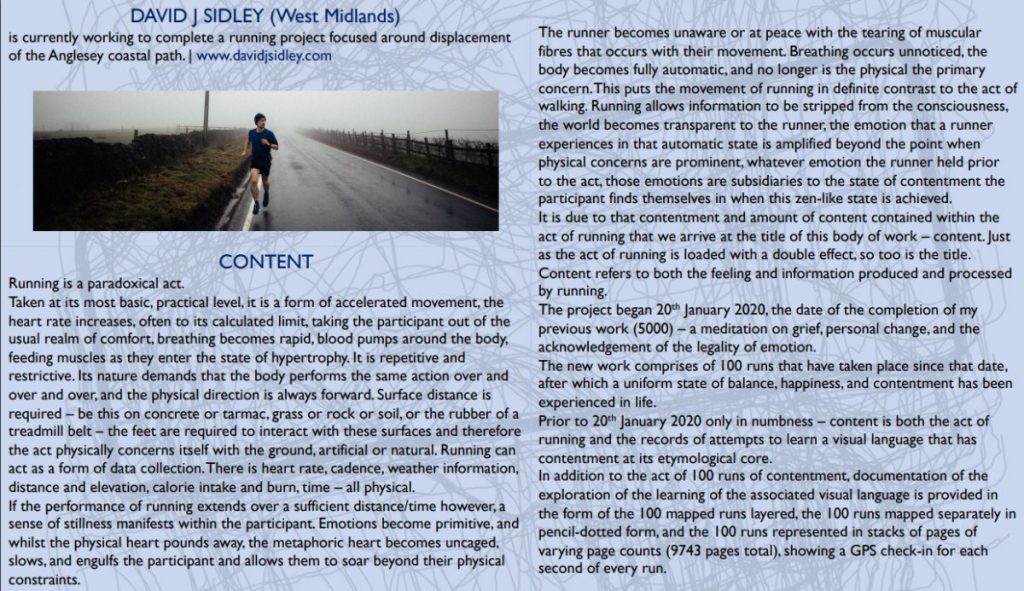
Beth Clayton made the point that in any discussion about running and art we need to consider how not running impacts our conscious and subconscious self. When running (or endurance walking for that matter) the achievement of physical nirvana is a delicate tightrope to tread. Get it right and the world feels ours, our senses explode and we catch every detail, but our physicality is there waiting to interrupt that state and knock us down. The colonial mindset she talks about is, I guess, referring to a realisation that the body has ultimate power over the self, it dominates and imposes its limits on what the self experiences.
The interesting point here is how, in modern society, relatively few people experience this point as all too often there is a fear of reaching a physical limitation. This is mirrored in the act of walking, when familiar locations are sought to prevent the experience of disorientation, of getting lost. On the walk I plan to do, I’ll be joining together stretches of familiar and ‘habited’ stretches of the river with others that are empty, unkempt, and geographically disorientating. It will be interesting to record how my thoughts vary between these different areas, between sites where I am comfortably orientated and those where I feel threatened by isolation.
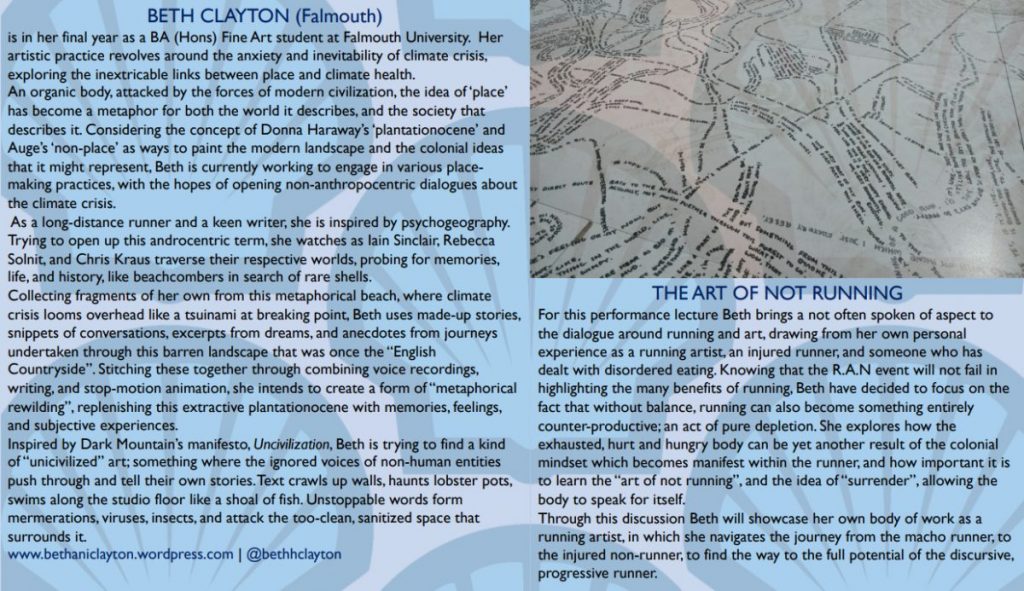
Veronique Chance is an endurance runner who talked about the influence of technology on the experience of running. I liked how she reminded us that running puts the body centre stage as a performance piece, second to speech, it produces humanness, it is the body’s first live performance. The differentiation between walking and running here is significant – the act of running turns a spotlight on the runner and I suggest that walking is the opposite, as a walking artist, is the focus more on the environment? Is a walker not performing in a literal sense, merely moving purposefully through the landscape?
For my own project, I’ve decided to walk the length of the River Erewash and once again this talk has made me think this is the right choice, at least for now. It is the nature of the environment that I want to document at this stage to piece together the scale and changing nature of this feature I know only in small sections. But I think to run the length of the river has a potential contrast that could be an experiment to consider further down the line. As I’ve learnt, the flow state of running would generate a more self-focused response to the locality that could be combined with a walking tour.
